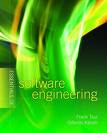Software Myths: Beliefs about software and the process used to build it – can be traced to the earliest days of computing. Myths have a number of attributes that have made them insidious.
Management myths: Managers with software responsibility, like managers in most disciplines, are often under pressure to maintain budgets. Keep schedules from slipping, and improve quality.
Myth: We already have a book that’s full of standards and procedures for building software. Won’t that provide with everything they need to know?Reality: The book of standards may very well exist, but is it used? Are software practitioners aware of its existence? Does it reflect modern software engineering practice? Is it adaptable? Is it streamlined to improve time to deliver while still maintaining a focus on quality? In many cases. The answer to all of these questions is no.
Myth:If we get behind schedule, we can add more programmers and catch up (Sometimes called the Monogolian horde concept)Reality: Brooks [BRO75] said “Adding people to a late software project makes it later.” As new people are added, people who were working must spend time educating the newcomers, thereby reducing the amount of time spent on productive development. People can be added but only in a planned and well-coordinated manner.
Myth:If I decide to outsource the software project to a third party. I can just relax and let that firm build it.Reality: In an organization does not understand how to manage and control software projects internally, it will invariably struggle when it outsources software projects.



